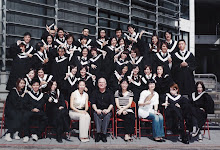There's always one dress missing in a woman's wardrobe.
 Purpose
Purpose• To further develop and enhance your creativity in developing a 'personal fashion style' that is both directional and marketable
• To produce a ready to wear collection that reflects your 'personal design style' but also has a distinct market focus.
• To develop conceptual ideas into fashion products for a chosen market segment.
Outline of Project
 Design brief.
Design brief.• Design a collection of a minimum of 15 coordinated pieces and a minimum of 6 models, for spring/summer 09/10
• Most pieces in the collection must cross over to create a comprehensive wardrobe. 'this goes with that'
• Decide market segment, for research, and develop a customer/client profile
• The design/inspiration theme for the collection is your choice.
• Design your collection for this market.
• Develop 2 coordinated color palettes.
• Consider knitted and woven fabrics, coordinated textures
 Research
Research• It is important that you research current and predicted future fashion trends (and develop your own trend based on this research).
• Research other areas other then fashion for inspiration including popular culture, subcultures, local and international lifestyle trends, historical references, architecture, nature, art, etc. etc. etc.
• The sources of inspiration are endless, what we require to know is, how what inspires and influences us drives our design process.
• Fabric and accessory innovations and color trends
• Documenting your research, is an important step in the design development process.
• To annotate what or how something inspires us assists us to design (why? do I like what I like)
• Research who your customer is, it is important you are fully aware of who your market is, what they do etc
Design
• A coordinated ready to wear collection, based on your research and chosen inspiration and theme,女人的衣櫃總是少一件衣服。There's always one dress missing in a woman's wardrobe. using a fully resolved design development process. All pieces in the collection must work together and reflect your personal style, it is important that you analyze your design with a critical eye (or train your eye to be analytical and critical of your own work, I like it or don't like it is not enough)
• Develop a color palette appropriate to chosen theme and market segment
• Understand fabrics, prints, textures, trims and accessory selection and coordination
Outcome of Project
 Design
Design
• A theme/inspiration board
• A customer profile
• Design development folio, depicting the development process from inspiration through to final drawings of collection
• A range/collection board (illustrated design)
• Color fabric board minimum 2 color ways
• Technical drawing of final garments that are to be produced
Theme and range boards can be presented in a format that is appropriate to the collection.
 Design
Design• A theme/inspiration board
• A customer profile
• Design development folio, depicting the development process from inspiration through to final drawings of collection
• A range/collection board (illustrated design)
• Color fabric board minimum 2 color ways
• Technical drawing of final garments that are to be produced
Theme and range boards can be presented in a format that is appropriate to the collection.
Checklist for assessment presentation
1. Design development folio - including research
2. Inspiration/Theme board
3. Customer profile
4. Range board/the collection (illustrations) 6 models
5. Technical drawing of the garments being produced
6. Fabric and color board Minimum 2 color schemes
7. Final garments
1. Design development folio - including research
2. Inspiration/Theme board
3. Customer profile
4. Range board/the collection (illustrations) 6 models
5. Technical drawing of the garments being produced
6. Fabric and color board Minimum 2 color schemes
7. Final garments



No comments:
Post a Comment